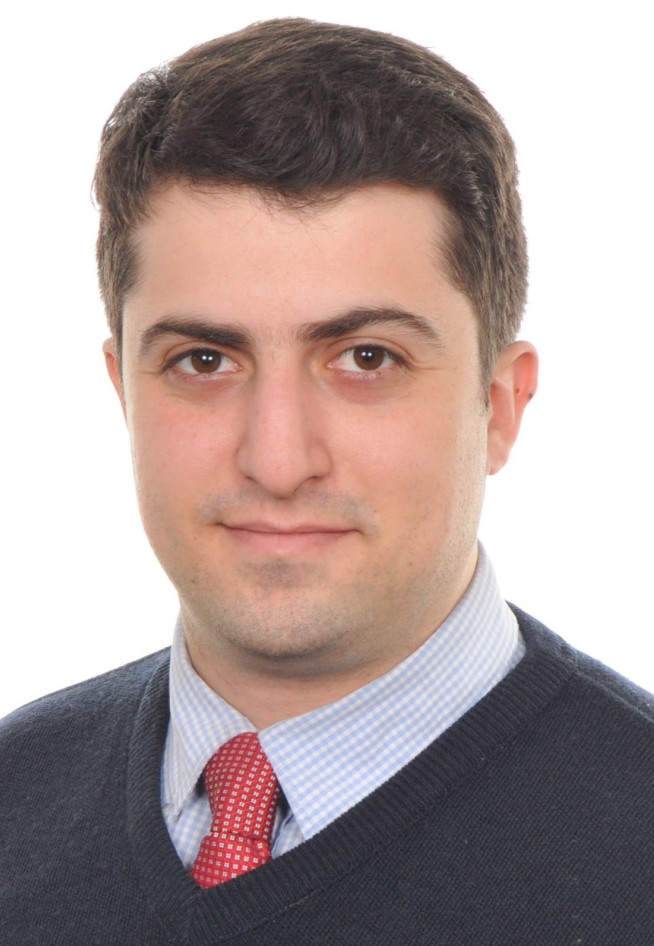
Michail Klontzas studied a PhD in Chemical Engineering at Imperial, where he was also a member of the Hellenic Society, but his first degree was in Medicine at the University of Crete. He is currently working as a resident doctor in radiology at the University Hospital of Heraklion, Greece.
One of Michail’s recent achievements was his appointment to the newly launched 2021-22 Trainee Editorial Advisory Board of the journal RadioGraphics. RadioGraphics is one of the flagship journals of the Radiological Society of North America (RSNA), as well as one of the most important educational resources in the world for radiology trainees. It is the first time that the journal has formed a trainee-composed editorial board, and Michail was chosen as one of 16 members out of 100 applications from all over the world. Only 4 members of the board are based outside of North America and Michail is one of them.
Check out this Tweet from RadioGraphics to see all the new board members.
Michail is looking forward to participating in the editorial board of this leading educational journal in the field of radiology, allowing him to contribute to shaping worldwide radiological education, with a great impact on patient care. The trainee editorial board is a great initiative and other Imperial graduates are encouraged to participate when the board changes again in 2022.
Learn more about the RadioGraphics editorial board opportunity.
We spoke to Michail about this remarkable achievement, as well as his life and career, from studying at Imperial to the present.
Can you tell us about your studies at Imperial?
After obtaining a medical degree from the University of Crete (Greece), I decided to move to the UK for postgraduate studies. I wanted to do a PhD in a Chemical Engineering department in order to delve into the field of tissue engineering. Tissue engineering is an interdisciplinary field, working towards the development of artificial tissues for regenerative medicine purposes. It was regenerative medicine that fascinated me since medical school and influenced my decision to do a PhD in this area, to learn how the principles of engineering can be applied to artificial tissue development. I strongly believe that the regeneration of damaged tissues in the lab is the future of medicine.
My PhD at Imperial focused on the use of metabolism as an indicator of how well stem cells can produce bone for the development of bone grafts for clinical applications. As part of my research, I studied methods to monitor bone production and developed a novel material that can be used for the production of bone grafts using stem cells for orthopaedic and maxillofacial surgery.
I did my PhD in a lab based at the department of Chemical Engineering (ACEX building, South Kensington Campus), with students from various educational backgrounds (biology, medicine, engineering, mathematics, chemistry). This experience allowed me to understand the importance of interdisciplinary collaboration which is necessary for the advancement of modern medicine.
Overall, during my time at Imperial I gained valuable research skills but first and foremost I made great friends from all around the world!
What is your fondest memory of your time here?
During my PhD I had the chance to attend one of the last lectures of Stephen Hawking, which was one of the most inspiring experiences I had while at Imperial. Read more about Stephen Hawking's last lecture at Imperial.
Can you tell us a bit about the work you’re doing now?
After leaving Imperial, I moved across the pond to the USA, to pursue a postdoc at Emory University School of Medicine. However, as a medical doctor, I strongly felt the need to return to clinical practice, taking the decision to become trained in radiology. I moved back to Greece for training in the Department of Medical Imaging of the University Hospital of Heraklion, which is a world-renowned centre of excellence in radiology.
In my work as a radiology trainee, I maintain a research collaboration with the Institute of Computer Science of the Foundation for Research and Technology, as a member of an interdisciplinary team working on musculoskeletal imaging, molecular imaging and artificial intelligence. I have also been recently selected as the only delegate of the European Society of Medical Imaging Informatics (EuSoMII) to the Radiology Trainee Forum of the European Society of Radiology (ESR). I have also been appointed as one of the few international members of the Trainee Editorial Board of RadioGraphics. This is one of the most important educational journals in the field of radiology, published by the Radiological Society of North America (RSNA).
What are your plans for the future?
After completing my training in radiology, I would like to specialise in musculoskeletal radiology and pursue interdisciplinary research combining musculoskeletal radiology, biomedical engineering and artificial intelligence.
Finally, do you have a favourite quote or saying?
As Teddy Roosevelt once said: “The credit belongs to the man who is actually in the arena...who at best, if he wins, knows the thrills of high achievement, and if he fails, at least fails while daring greatly”.
You can find Michail on Twitter at @Klonmich, and see his publications on Google Scholar.
Michail's favourite quote
Teddy Roosevelt: “The credit belongs to the man who is actually in the arena...who at best, if he wins, knows the thrills of high achievement, and if he fails, at least fails while daring greatly”